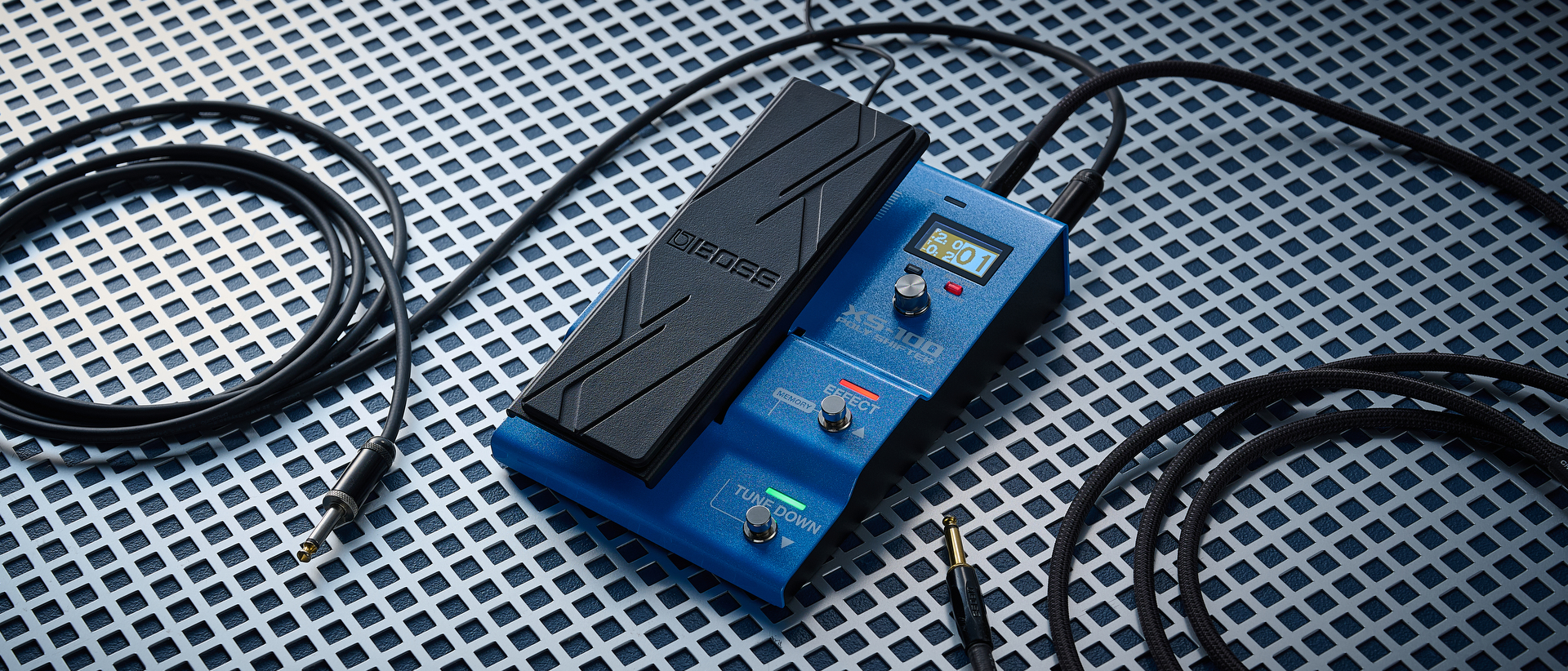Guitar World Verdict
Boss has worked hard to counter the DigiTech Whammy's biggest pitfalls, but whether it dethrones it outright is a matter of taste. Its shifting is cleaner, but at the loss of some of the red pedal's wackiness, and its menu system isn't the most intuitive. In that sense, the Whammy is more approachable, but with a bank of 30 presets, a greater octave range, and a sculptable Balance control, the XS-100 is likely to convert many dyed-in-the-wool shifters.
Pros
- +
Ultra-clean pitch-shifting
- +
Great customization
- +
Makes full use of the expression pedal
- +
Bank of 30 presets
- +
MIDI compatible
Cons
- -
Cleanliness makes it less characterful than the Whammy
- -
Navigation isn’t easy
- -
Slightly too preset and MIDI focused
You can trust Guitar World
What is it?
For decades, the DigiTech Whammy pedal has reigned supreme in the world of foot-controlled pitch-shifters, and rarely has anything challenged its kingdom. It’s a pedal that has been beloved by elite players from myriad generations and styles – see everyone from Tom Morello, Dimebag Darrell and Jack White to Prince, Noel Gallagher, Matt Bellamy, and practically every thall guitarist for evidence.
In 2011, the red pitch-shifting pedal, unique for its expression pedal allowing for alien octave sweeps a la the Killing in the Name guitar solo, was upgraded. The DT married the Whammy with Digitech’s polyphonic drop tuning pedal, Drop, and players have been harnessing it for some bonkers results ever since.
Now, after years of hard graft behind the scenes, Boss has brought forth a challenger (two, including the XS-1), and it’s blue, so you know it’s war. But it isn’t just wanting to go toe-to-toe with DigiTech, it wants to feed it its dust. Stretching up and down by four octaves, it doubles the Whammy’s money, and does so with the promise of glitch-free performance, shifting without the quirky artefacts that have been love-or-hate amongst Whammyists.
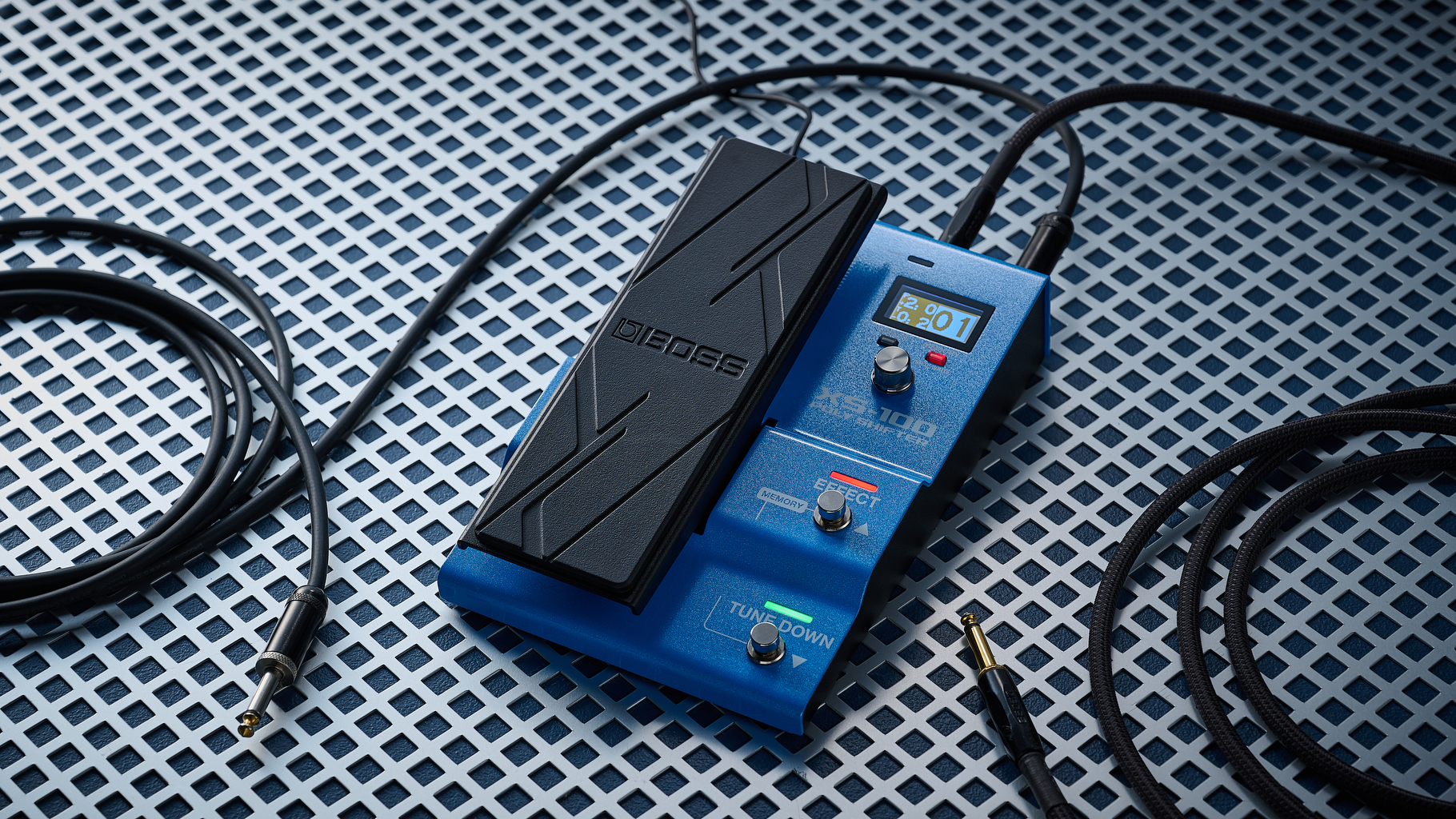
The speed of its expression pedal curve and response can be slowed down and sped up via different modes, and its detune offers the same expansive range via semitonal increments and momentary operation.
Beyond that, there's unbridled MIDI compatibility, ensuring the Whammy's greatest asset is mirrored, and for many, the addition of a clear LED screen and bank of 30 preset slots goes beyond its rival.
Other features include the ability to link it to another expression pedal, its bass-friendly usage, and dedicated analog thru, with pitch-shifting and detuning able to run simultaneously. On paper, it’s certainly comprehensive.
Gunning for a pedal whose talons have been so firmly in the flesh of the industry – and on the pedalboards of many greats – for years is a bold move from Boss. The fact it hasn’t served as heavy inspiration before seems quite remarkable, so now that is has, is the Whammy about to be dethroned at long last?
All the latest guitar news, interviews, lessons, reviews, deals and more, direct to your inbox!
Specs
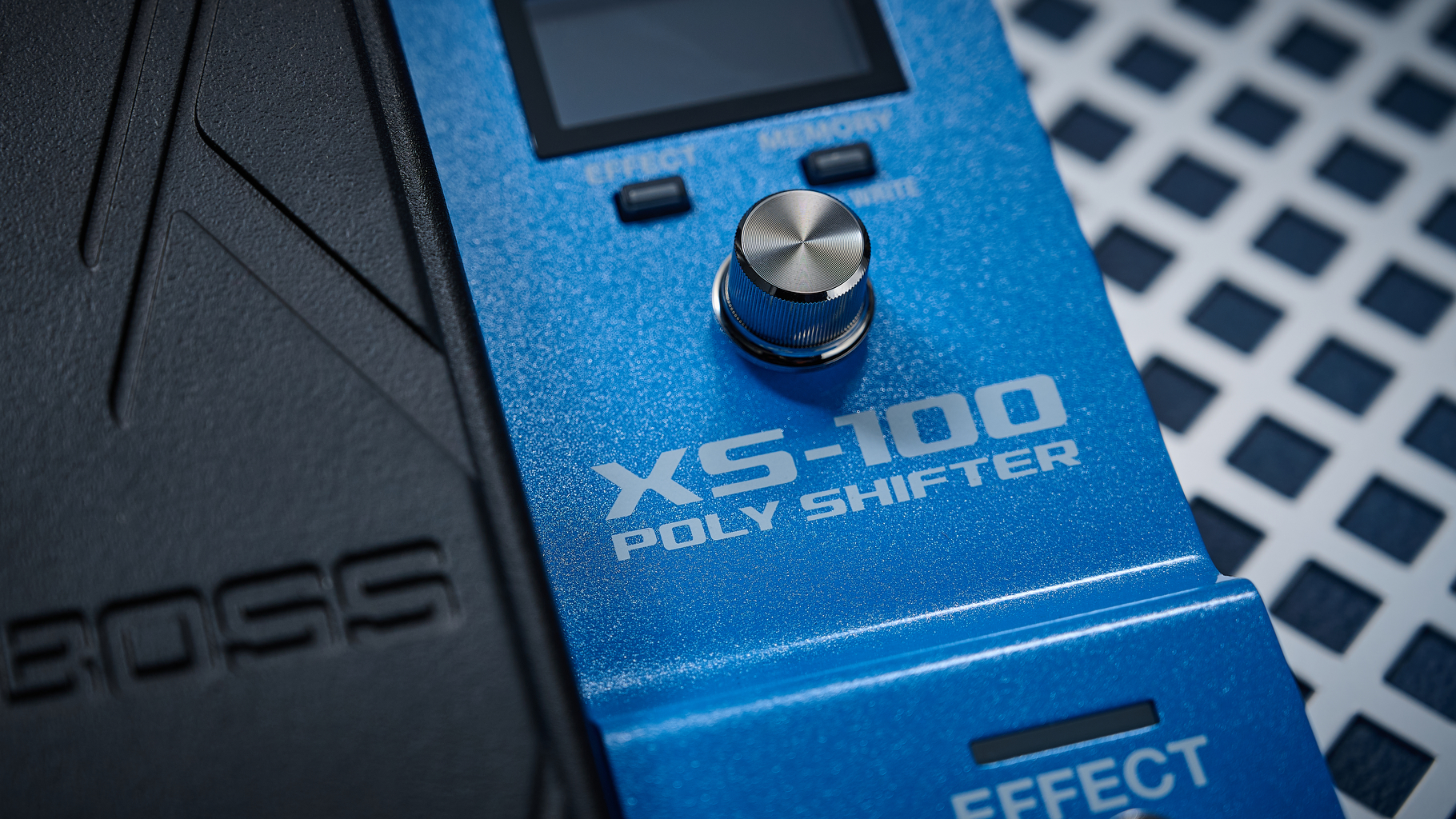
- Launch price: $349 / £299
- Type: Pitch-shifter pedal
- Controls: Expression Pedal, Effect, Tune Down, Select, Effect, Memory
- Features: Pitch-shifter with and without expression pedal,
- Connectivity: Audio in, audio out, expression in, MIDI in, MIDI out
- Bypass: Buffered
- Power: 9V AC, 160 mA power supply included
- Dimensions: 147mm (W), 230mm (D), 72-96mm (H)
- Weight: 1.7kg (3.7 lbs)
- Options: N/A
- Contact: Boss

Build quality
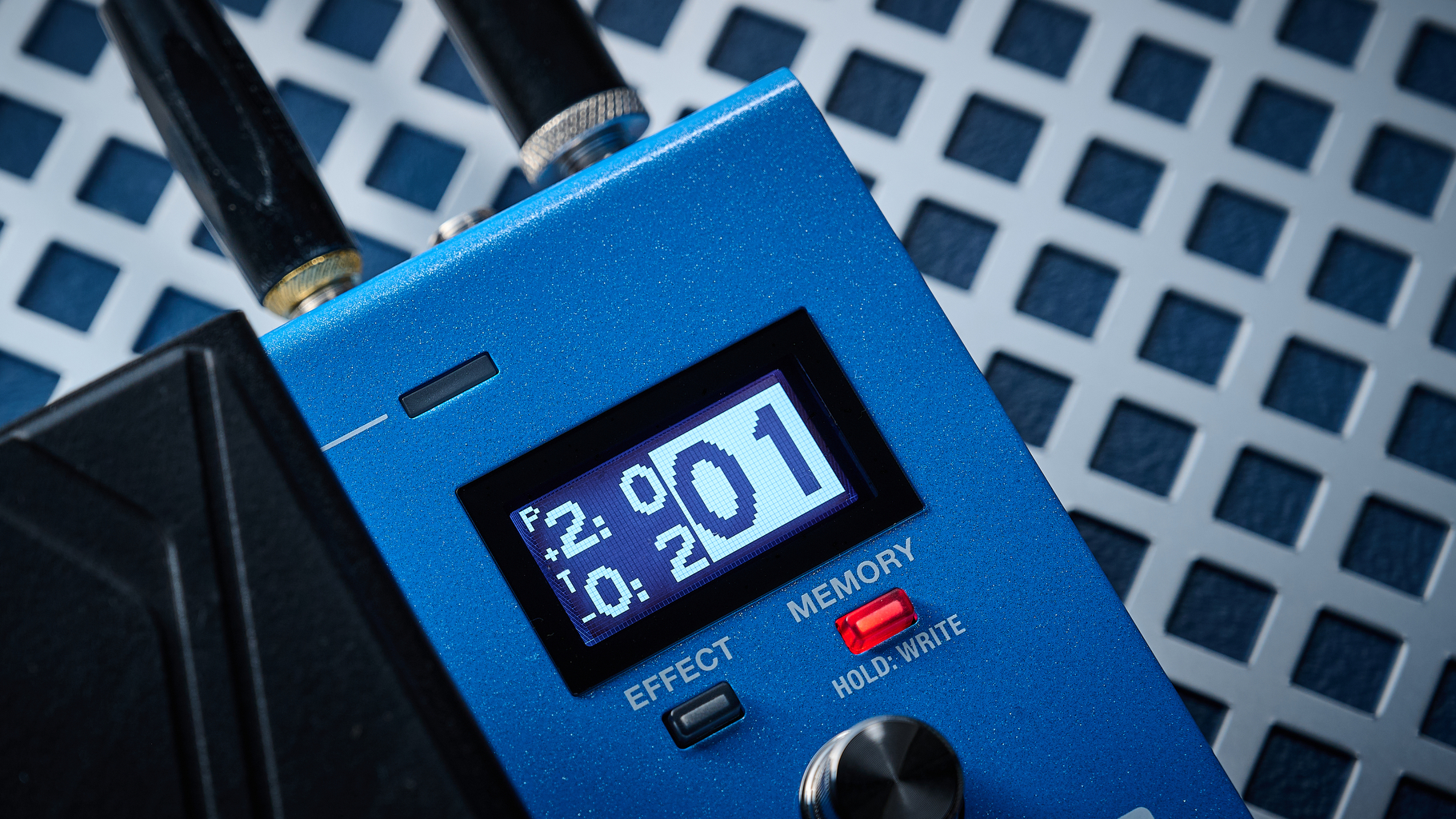
Build quality rating: ★★★★★
The XS-100 is a lot smaller than the Whammy DT and roughly the same size as a standard Whammy. Weight-wise, it’s not too different, either, so those wanting a slim, super transportable alternative will be slightly disappointed, but it’s solidly built. It can take a kicking.
It’s got a really sleek design, with far fewer switches and flickering lights; the LED screen does most of the heavy lifting. The intention is to make it a less intimidating prospect for pitch-shifting newbies.
The expression pedal itself operates quite smoothly. Out of the box, it has a consistent motion, and it feels a little less mechanical and clunky than its rival. There’s also a nice amount of cushioning for when the toe of the pedal meets the body itself.
It’s got a really sleek design, with the LED screen doing most of the heavy lifting.
Like DigiTech, Boss makes adjusting the pedal easy with a screw accessible on its side for those who want more or less resistance when stomping on it. I was perfectly happy with the stock presentation.
Aesthetically, the subtle sparkle is really nice, and the font sizes are pretty sizable; everything is readable from a distance. If I had $5 for every time I’ve had to squat mid-song on stage to make sure my Whammy’s on the right setting, I probably wouldn’t be needing to write this; I’d be in the Bahamas.
Usability
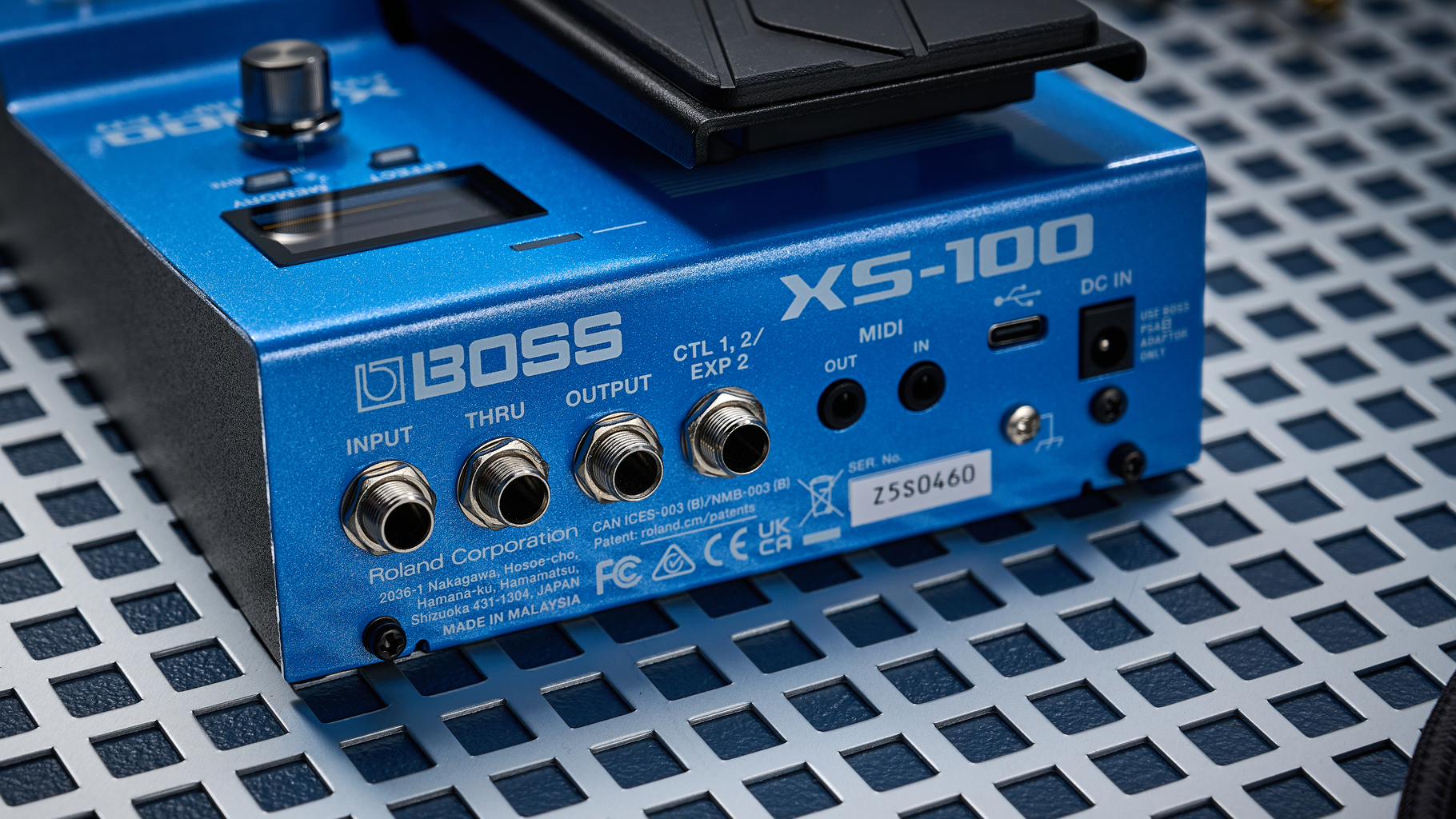
Usability rating: ★★★½
As far as usability goes, Boss is really trying to stick it to DigiTech here by streamlining its navigation. It centers on a knob just below the screen, which in standard mode is split in half, with the top displaying the set interval of each effect. Whichever is highlighted in white is editable, with the knob turning to adjust the semitone count. Hold it down, and you can move one octave at a time. Saving presets is a doddle, too.
The behaviours of the pedal are also highly customizable. Having the pedal only effective after it's been engaged with the footswitch, or activating it as soon as I place my foot on it like a switchless wah, are two such options.
But, because the screen is so small, Boss speaks in code, and getting into the nitty-gritty of it all is hugely convoluted. Where the Whammy lays it all out on the face of the pedal itself, Boss has locked things away behind a series of menus. I found it very easy to get stuck in the weeds.
The XS-100 can do a lot, but the Whammy’s baked-in modes make initial exploring a whole lot easier – I actually feel kind of restricted being limited to just the small screen. It's all a bit cloak and dagger.
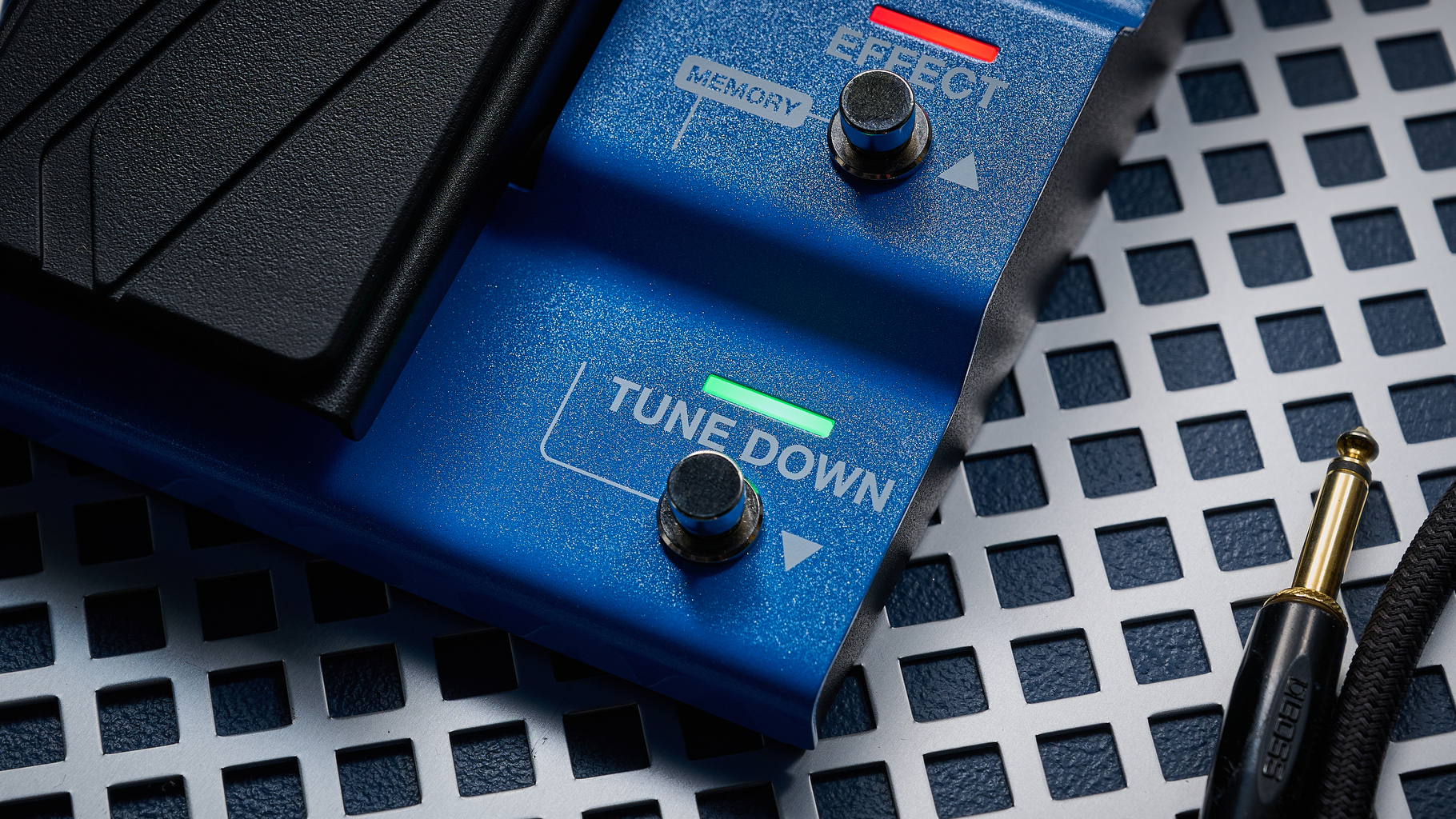
But there are possible benefits of this setup. I’m on my second Whammy. Moving from Gen 3 to the DT was partly due to wanting the detune feature, but it was also dictated by the fact that my old one was going senile. It would randomly change modes, as if the selection knob had a life of its own. I’d stomp on the pedal expecting to go up an octave for a whammy squeal, only to find it was going down a fourth. Locking things in place with presets is a viable solution, as well as a speedy one.
Indeed, its presets are a big pull here, especially when I often use a variety of presets between songs and am yet to go full MIDI, meaning effortless human operation is a big help. However, there is no way to name presets, so remembering if the next song needs preset 6 or 7 on the fly is a challenge. It also looks like reordering them isn’t possible, so if you have the presets reflect your set list, only for that order to change, you are in for some laborious admin to put things right. Using MIDI, though, is the obvious solution. This is a minor gripe for a MIDI-less shredder.
In fact, it feels like the pedal is more geared to MIDI usage than the Whammy. Though the latter has been MIDI-ed up to the nines by the majority of its adoptees, for those, like me, who have yet to venture into that world, the hands-on nature of the Whammy makes operation a lot easier.
Sounds
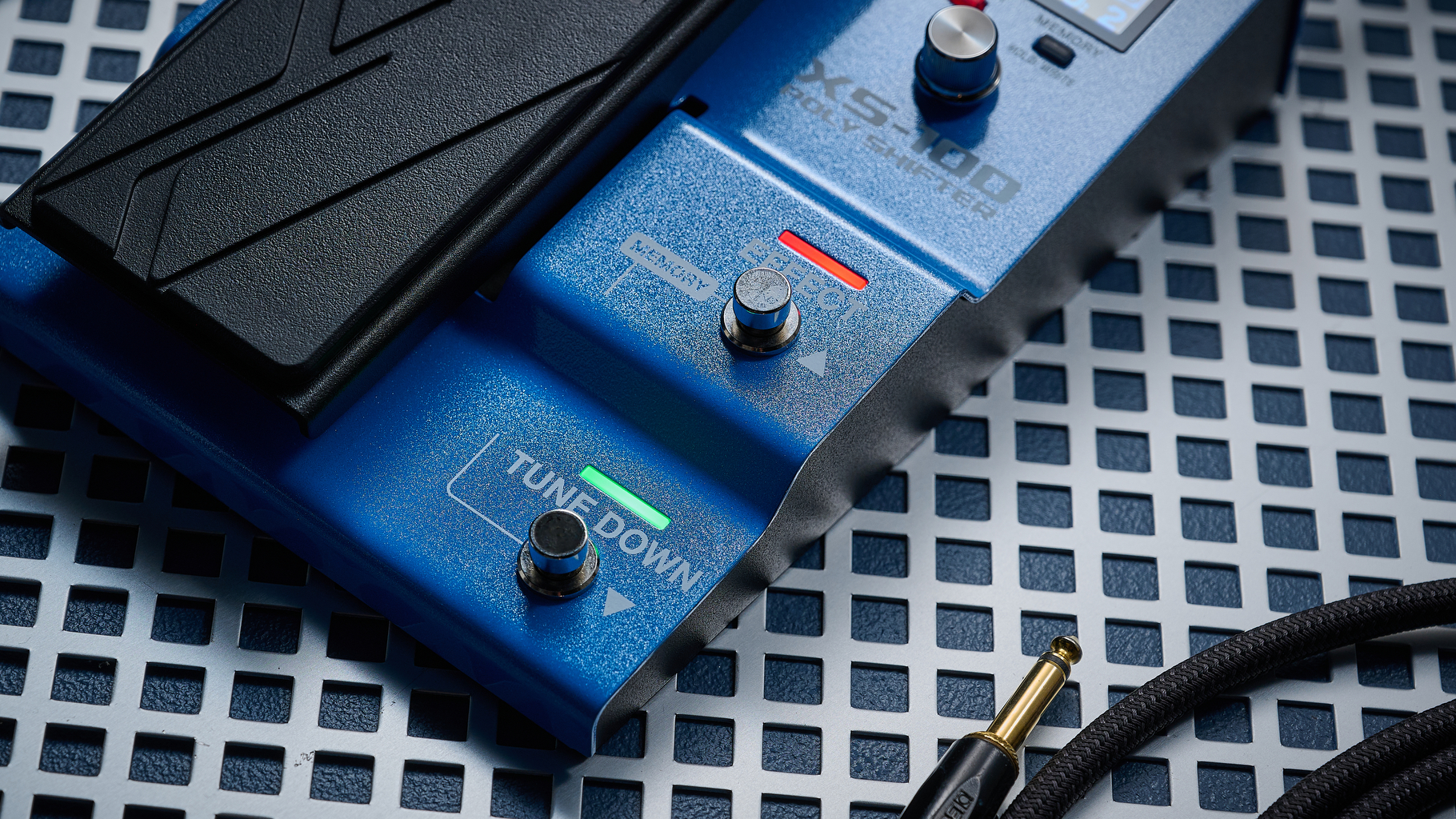
Sounds rating: ★★★★½
In a tit-for-tat shootout against the Whammy, Boss is a clear winner in terms of the cleanliness of its effects. At +2 octaves, shifting with the pedal isn’t completely glitch-free, especially with things like ringing harmonics, but on the whole, there are far, far fewer tonal artefacts present.
The same can be said for the detune function; it’s very convincing, especially when going beyond +/- 5 semitones, where the Whammy can get a little warbly; it sounds pitched, while the Boss sounds incredibly natural.
But that isn’t necessarily a good thing. Maybe I have a little Stockholm syndrome, but I actually like the weird glitchiness of the Whammy; by cleaning the effect to within an inch of its life, it has also drained the character and wackiness from the effect. Stomping down for a squealing octave sweep just doesn’t feel the same. It becomes a matter of preference which one is best for you.
By cleaning the effect to within an inch of its life, it has also drained the character and wackiness from the effect
Its expression pedal's sculptability is unrivaled, however. Instead of being confined to set intervals, I have complete control, and putting the pedal at +7 semitones lets me loosely imitate slide guitar sounds, or at +1, it could fairly convincingly replace bending, which could help with tuning stability on more temperamental instruments.
There’s a blend function buried within the XS-100’s maze of menus. It’s labelled as Balance, and it lets me choose how much dry and effected signal comes garbling out the other end.
In truth, it sounds fantastic. With the detune and dry signal equally balanced, it makes for some pretty gnarly octaver sounds. Personally, I found the Whammy to be a little nastier in this respect, but the difference was minuscule, and XS-100's extra level of customization more than makes up for that.
When sticking within the first octave, the detune feature tracks a little better than the Whammy, but the differences are extremely minor. Both are very impressive.
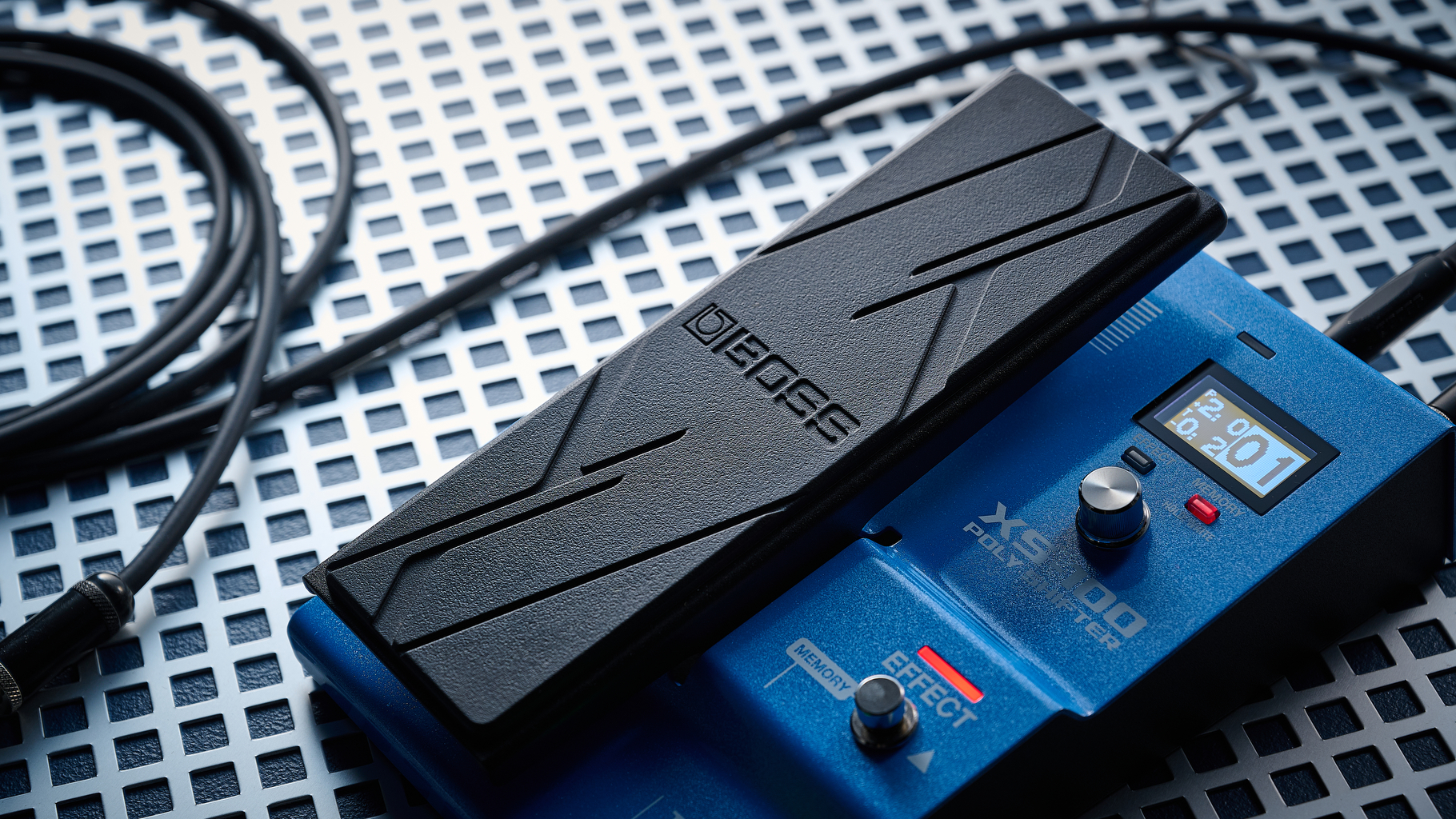
Dropping four octaves could be a solid cure for constipation, but it’s not exactly musical
Elsewhere, the lack of a Shallow/Deep alternative – which is a chorus-y type effect that wobbles notes like it’s doing a vibration plate workout – is a crying shame. I actually use that function a lot for adding an extra dose of weird to certain licks.
It works by adding a second, slightly-detuned signal into the mix, creating that unstable chorus effect. But diluting a -1 semitone detune with dry signal (at a 100:10 dry-to-effect ratio) still felt a way off.
Where this setup shines, though, is with big, heavy chugs. It adds an evil, unsettling undercurrent to them, making it ideal for breakdowns.
It’s also worth noting that the fact that the Boss can travel across an eight octave span isn’t really that great in practice. Beyond two octaves either way, tracking is pretty poor, and honestly, who needs to drop down by four octaves? Sure, it could be a solid cure for constipation, but it’s not exactly musical.
Verdict
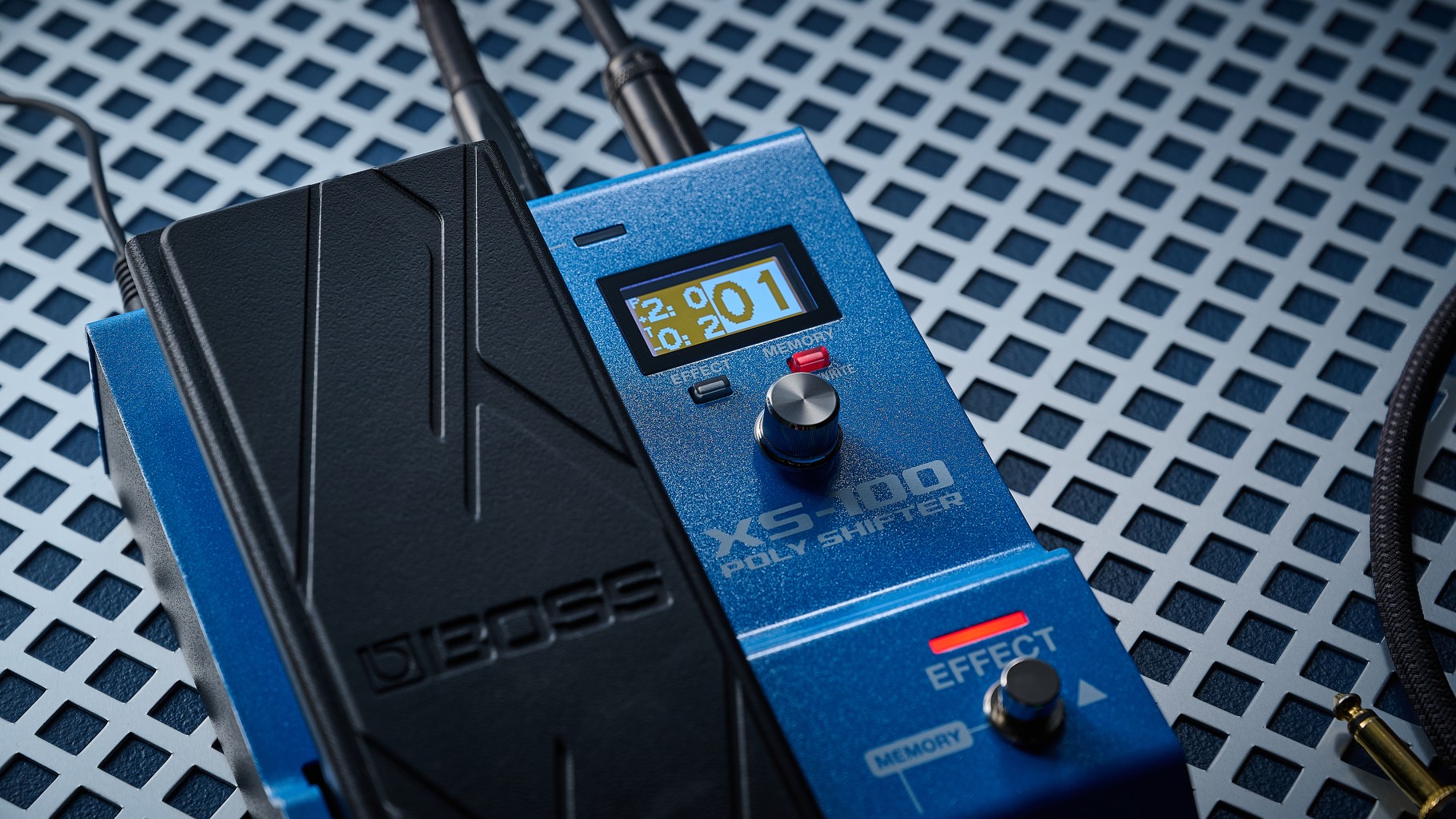
The fact that the DigiTech Whammy now has an outright rival – and a worthy adversary at that – is good news for musicians of all dispositions. Competition is a great thing, and Boss isn’t holding back here.
It’s worked hard to counter the Whammy’s biggest pitfalls, but in the heat of the battle, there isn’t a clear winner. Yes, the pitching is cleaner, but arguably at the expense of the effect’s character, and while it tries to solve the Whammy’s navigation downfalls, it gets lost in convoluted menu systems of a small screen.
Boss has created an excellent product, and it will bring joy, creativity, and new levels of expression to a whole host of players
There are clear benefits, though: the preset bank is hugely appealing, and the Balance parameter headlines a far greater suite of customization options, and, if you can find a musical context for pitching up or down four octaves, the XS-100 has you covered.
As a long-term Whammy user, I don’t see the need to jump ship. Certainly not immediately, anyway. If I were buying an expression pedal-laden pitch-shifter for the first time, then the competition would certainly be fiercer – it becomes a case of historic reputation versus the fresh-faced challenger with (slightly) new ideas.
Much of what will sway things comes down to personal opinion. But what’s clear is that Boss has created an excellent product, and it will bring joy, creativity, and new levels of expression to a whole host of players. Whether I’ll be among them remains to be seen.
Guitar World: Boss has worked hard to counter the DigiTech Whammy's biggest pitfalls, but whether it dethrones it outright is a matter of taste. Its shifting is cleaner, but at the loss of some of the red pedal's wackiness, and its menu system isn't the most intuitive. In that sense, the Whammy is more approachable, but with a bank of 30 presets, a greater octave range, and a sculptable Balance control, the XS-100 is likely to convert many dyed-in-the-wool shifters.
Test | Results | Score |
|---|---|---|
Build quality | Ruggedly built and beautifully designed | ★★★★★ |
Usability | Doing the basics is highly intuitive; getting stuck into the rest is less so | ★★★½ |
Sounds | It's got plenty of tricks up its sleeve, and each sound is highly customizable | ★★★★½ |
Overall | Incredibly clear pitch shifting and a worthy rival to a legendary stompbox, slightly let down by its navigation | ★★★★½ |
Also try
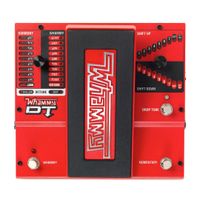
DigiTech Whammy DT
$330/£244
The original pitch-shifter, better than ever. With two +/- octave shifts, impressive detuning, and its unique Shallow/Deep chorus gargling, it’s a pedal beloved by some of the world’s most inventive players, and with good reason.
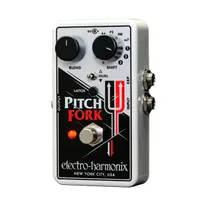
Electro-Harmonix Pitch Fork
$198/£169
EHX is well known for its pitch-based effects, and the Pitch Fork offers polyphonic pitch-shifting over +/- three octaves. It's a bit fiddly due to the small size, but like the Boss XS-1, you can connect an expression pedal for Whammy-style bends.
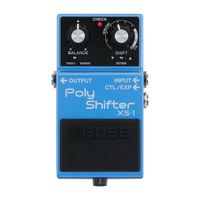
Boss XS-1 Poly Shifter
$199/£194
The same best-in-class pitch-shifting as its big brother, the XS-1 comes in a standard stompbox size, and adds in a Balance switch for blending in its pitch-shifting quirks – and it’s a fair chunk cheaper, too.
Hands-on videos
Guitar World

Guitar Guitar
Dagan Wilkin
A freelance writer with a penchant for music that gets weird, Phil is a regular contributor to Prog, Guitar World, and Total Guitar magazines and is especially keen on shining a light on unknown artists. Outside of the journalism realm, you can find him writing angular riffs in progressive metal band, Prognosis, in which he slings an 8-string Strandberg Boden Original, churning that low string through a variety of tunings. He's also a published author and is currently penning his debut novel which chucks fantasy, mythology and humanity into a great big melting pot.
You must confirm your public display name before commenting
Please logout and then login again, you will then be prompted to enter your display name.
